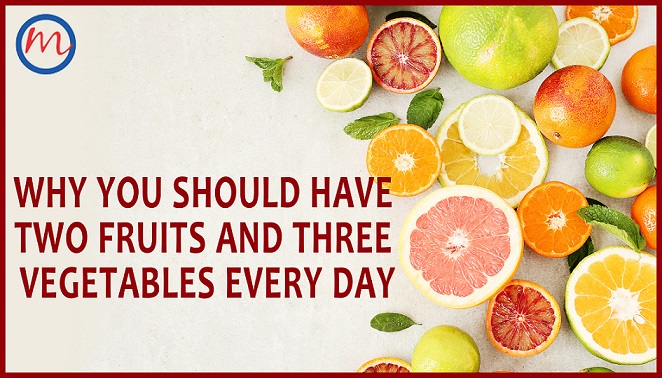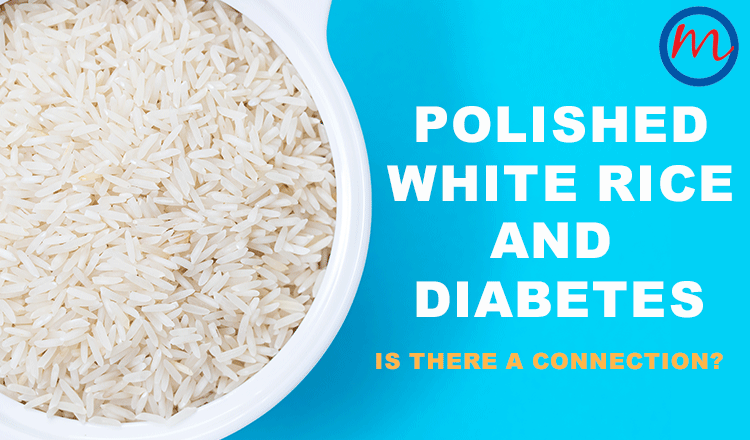With plant-based diets sweeping the world, we are back to what grandmothers always said: “Eat your fruits and vegetables.” One of the most effective ways to improve your health, boost energy levels and prevent diseases is to have more fruits and vegetables.
But far too many “ifs” and “buts” stand in our way: how many fruits and vegetables should you have? Should you eat more of everything or specific ones? Different fruits and vegetables have different nutritional properties and distinct health effects. Should you consider those? Take, for instance, potatoes: should you up to your intake of potatoes, too?
New research on fruits and vegetables
Here is a new study from the Harvard T. H. Chan School of Public Health, US, that appears in the March 1, 2021, issue of Circulation, the journal of the American Heart Association
The research finds that consuming at least two fruit and three vegetable servings on a daily basis may lower the risk of both disease-related death and death from all causes. The research supports the consistent findings that a diet high in fruits and vegetables is protective and preventive of major chronic diseases, including heart diseases, diabetes, and cancer.
The research is also helpful because it answers many of the “ifs,” “buts,” and questions raised above. For instance (and importantly for people with diabetes) the research shows higher intake of starchy vegetables may not confer the same health benefits as other fruits and vegetables, especially on coronary heart disease and type 2 diabetes, body weight and hypertension. The higher glycaemic load of starchy fruits and vegetables is linked to elevated risks of major chronic diseases.
Why fruits and vegetables?
The research comes in the wake of some of the most exciting research in recent years: that is, the discovery of naturally occurring compounds in fruits and vegetables, called antioxidants. They impart a bright colour to fruits and vegetables, work to scavenge harmful free radicals from the body, have protective effects against cell oxidation and cell death—which are implicated in most degenerative diseases. A slew of new research has been showing how diets rich in fruits and vegetables reduce the incidence of diabetes, heart problems, cancer and tumour growth, arthritis and also of ageing.
Of the various significant levels of biologically active components in fruits and vegetables, that impart health benefits beyond basic nutrition are: ascorbic acid (e.g. citrus fruits, guava, litchi, pepper, broccoli, guava), carotenoids (e.g. pineapple, mango, melon, tomato, carrot), polyphenols (e.g. oranges, apples, grapes, pomegranate, amlaki, lychee, jamun and jujubes known as ber or kul in Indian languages), tocopherols (e.g. nuts, seeds, vegetable oils) and tocotrienols (e.g. coconut and kiwi) and others.
How much is enough?
Inadequate intake of fruit and vegetables ranks among the top dietary contributors to the burden of chronic diseases and premature death worldwide. The World Health Organization (WHO) has recommended that people should consume a minimum of 400 g of fruit and vegetables per day (excluding potatoes and other starchy tubers).
The WHO recommendation has led to the 5-a-day campaign across countries—US, UK, France and Germany—to encourage the consumption of at least five portions of fruit and vegetables each day. Yet, with a clutch of research indicating that most people consume less than half the recommended amount of fruits and vegetables, the campaign has evolved further. The recommendations, however, vary around the world.
The Healthy Style Eating Pattern of the USDA Dietary Guidelines, 2015-2020, suggests two-and-a-half servings of vegetables and two servings of fruit per day; the WHO, the World Cancer Research Fund, and the NHS in the UK recommend five servings of fruit and vegetables per day; in Denmark, it is six servings and in Australia 8.5 servings.
The Indian intake
In India, the Indian Phytonutrient Report by the ICMR (2016) shows that the proportion of household income spent on fruits and vegetables between 1993 and 2011 has not changed much. The Indian diet pattern is skewed towards cereals, and fruits and vegetables account for only nine per cent of the total calorie intake (NSSO 2014). The average intake of fruits and vegetables is 3.5 servings per day (1.5 servings of fruits and 2 servings of vegetables).
It is even lower among the younger generation (18-25 years) at 2.97 servings per day. The average daily intake is higher for higher income groups. And among cities, it is the highest in Chennai (4.35) and the lowest in Kolkata (2.81) servings per day on average. There are variations across diet types, too: from 3.87 servings for a vegetarian to 3.43 for an eggetarian and 3.2 servings for a non-vegetarian.
Takeaways from the research
- The researchers followed 66,719 women and 42,016 men from two large-scale epidemiological studies (1986–2014), who were free from heart problems, cancer, and diabetes. Their diet was assessed using a questionnaire and updated every 2 to 4 years. The study results documented inverse associations between fruit and vegetable intake with chronic diseases and death. The following are some of the key research takeaways that you need to keep in mind:
- A higher intake of fruit and vegetables was found to be associated with a lower risk of death.
- The lowest risk of mortality was observed for five servings per day of fruit and vegetable intake (but not fruit juices and potatoes). thresholds of risk reduction in mortality were 2 servings daily for fruit intake and 3 servings daily for vegetable intake
- Although higher intakes of fruit and vegetables were associated with a lower risk of death, it plateaued at about five servings of fruits and vegetables per day.
- Higher than five servings intake did not lower the risk of death further. This could be because the bioactive components of fruits and vegetables, such as carotenoids, vitamin C, and polyphenols, have limits in absorption, transport, metabolism, or storage, and their effects may be mediated by enzyme activities that can get saturated.
- The thresholds of risk reduction in death were two servings daily for fruit intake and three servings daily for vegetable intake. Higher intakes of most fruits and vegetables brought down the risk of death, although starchy vegetables, fruit juices, and potatoes did not.
- The research findings do not support the position on treating all types of fruits and vegetables the same and including juices and potatoes into the fruit and vegetable groups, without considering their potentially differential nutritional properties and health effects.
- Higher intakes of potatoes lead to body weight gain and an increased risk of type 2 diabetes. Potatoes have high glycaemic load values because of their predominantly starch content.
- Fruit juices (especially, commercially available ones) lead to body weight gain and an increased risk of type 2 diabetes. Beyond their high glycemic load values and reduced nutrient content during production, juices, as fluids, may lead to more rapid and pronounced increases in blood glucose and insulin after meals than whole fruits and vegetables, without significantly enhancing appetite.
- The researchers point out that certain types of juice, such as citrus juice, may have higher levels of antioxidant activity and the ability to lower fats than other juices.
WHY YOU SHOULD HAVE TWO FRUITS AND THREE VEGETABLES EVERY DAY
With plant-based diets sweeping the world, we are back to what grandmothers always said: “Eat your fruits and vegetables.” One of the most effective ways to improve your health, boost energy levels and prevent diseases is to have more fruits and vegetables.
But far too many “ifs” and “buts” stand in our way: how many fruits and vegetables should you have? Should you eat more of everything or specific ones? Different fruits and vegetables have different nutritional properties and distinct health effects. Should you consider those? Take, for instance, potatoes: should you up to your intake of potatoes, too?
New research on fruits and vegetables
Here is a new study from the Harvard T. H. Chan School of Public Health, US, that appears in the March 1, 2021, issue of Circulation, the journal of the American Heart Association
The research finds that consuming at least two fruit and three vegetable servings on a daily basis may lower the risk of both disease-related death and death from all causes. The research supports the consistent findings that a diet high in fruits and vegetables is protective and preventive of major chronic diseases, including heart diseases, diabetes, and cancer.
The research is also helpful because it answers many of the “ifs,” “buts,” and questions raised above. For instance (and importantly for people with diabetes) the research shows higher intake of starchy vegetables may not confer the same health benefits as other fruits and vegetables, especially on coronary heart disease and type 2 diabetes, body weight and hypertension. The higher glycaemic load of starchy fruits and vegetables is linked to elevated risks of major chronic diseases.
Why fruits and vegetables?
The research comes in the wake of some of the most exciting research in recent years: that is, the discovery of naturally occurring compounds in fruits and vegetables, called antioxidants. They impart a bright colour to fruits and vegetables, work to scavenge harmful free radicals from the body, have protective effects against cell oxidation and cell death—which are implicated in most degenerative diseases. A slew of new research has been showing how diets rich in fruits and vegetables reduce the incidence of diabetes, heart problems, cancer and tumour growth, arthritis and also of ageing.
Of the various significant levels of biologically active components in fruits and vegetables, that impart health benefits beyond basic nutrition are: ascorbic acid (e.g. citrus fruits, guava, litchi, pepper, broccoli, guava), carotenoids (e.g. pineapple, mango, melon, tomato, carrot), polyphenols (e.g. oranges, apples, grapes, pomegranate, amlaki, lychee, jamun and jujubes known as ber or kul in Indian languages), tocopherols (e.g. nuts, seeds, vegetable oils) and tocotrienols (e.g. coconut and kiwi) and others.
How much is enough?
Inadequate intake of fruit and vegetables ranks among the top dietary contributors to the burden of chronic diseases and premature death worldwide. The World Health Organization (WHO) has recommended that people should consume a minimum of 400 g of fruit and vegetables per day (excluding potatoes and other starchy tubers).
The WHO recommendation has led to the 5-a-day campaign across countries—US, UK, France and Germany—to encourage the consumption of at least five portions of fruit and vegetables each day. Yet, with a clutch of research indicating that most people consume less than half the recommended amount of fruits and vegetables, the campaign has evolved further. The recommendations, however, vary around the world.
The Healthy Style Eating Pattern of the USDA Dietary Guidelines, 2015-2020, suggests two-and-a-half servings of vegetables and two servings of fruit per day; the WHO, the World Cancer Research Fund, and the NHS in the UK recommend five servings of fruit and vegetables per day; in Denmark, it is six servings and in Australia 8.5 servings.
The Indian intake
In India, the Indian Phytonutrient Report by the ICMR (2016) shows that the proportion of household income spent on fruits and vegetables between 1993 and 2011 has not changed much. The Indian diet pattern is skewed towards cereals, and fruits and vegetables account for only nine per cent of the total calorie intake (NSSO 2014). The average intake of fruits and vegetables is 3.5 servings per day (1.5 servings of fruits and 2 servings of vegetables).
It is even lower among the younger generation (18-25 years) at 2.97 servings per day. Average daily intake is higher for higher income groups. And among cities, it is the highest in Chennai (4.35) and the lowest in Kolkata (2.81) servings per day on average. There are variations across diet types, too: from 3.87 servings for a vegetarian to 3.43 for an eggetarian and 3.2 servings for a non-vegetarian.
Takeaways from the research
The researchers followed 66,719 women and 42,016 men from two large-scale epidemiological studies (1986–2014), who were free from heart problems, cancer, and diabetes. Their diet was assessed using a questionnaire and updated every 2 to 4 years. The study results documented inverse associations between fruit and vegetable intake with chronic diseases and death. The following are some of the key research takeaways that you need to keep in mind:
- A higher intake of fruit and vegetables was found to be associated with a lower risk of death.
- The lowest risk of mortality was observed for five servings per day of fruit and vegetable intake (but not fruit juices and potatoes). thresholds of risk reduction in mortality were 2 servings daily for fruit intake and 3 servings daily for vegetable intake
- Although higher intakes of fruit and vegetables were associated with lower risk of death, it plateaued at about five servings of fruits and vegetables per day.
- Higher than five servings intake did not lower risk of death further. This could be because the bioactive components of fruits and vegetables, such as carotenoids, vitamin C, and polyphenols, have limits in absorption, transport, metabolism, or storage, and their effects may be mediated by enzyme activities that can get saturated.
- The thresholds of risk reduction in death were two servings daily for fruit intake and three servings daily for vegetable intake. Higher intakes of most fruits and vegetables brought down risk of death, although starchy vegetables, fruit juices, and potatoes did not.
The research findings do not support the position on treating all types of fruits and vegetables the same and including juices and potatoes into the fruit and vegetable groups, without considering their potentially differential nutritional properties and health effects.
- Higher intakes of potatoes lead to body weight gain and an increased risk of type 2 diabetes. Potatoes have high glycaemic load values because of their predominantly starch content.
Fruit juices (especially, commercially available ones) lead to body weight gain and an increased risk of type 2 diabetes. Beyond their high glycemic load values and reduced nutrient content during production, juices, as fluids, may lead to more rapid and pronounced increases in blood glucose and insulin after meals than whole fruits and vegetables, without significantly enhancing appetite.
- The researchers point out that certain types of juice, such as citrus juice, may have higher levels of antioxidant activity and ability to lower fats that than other juices.




